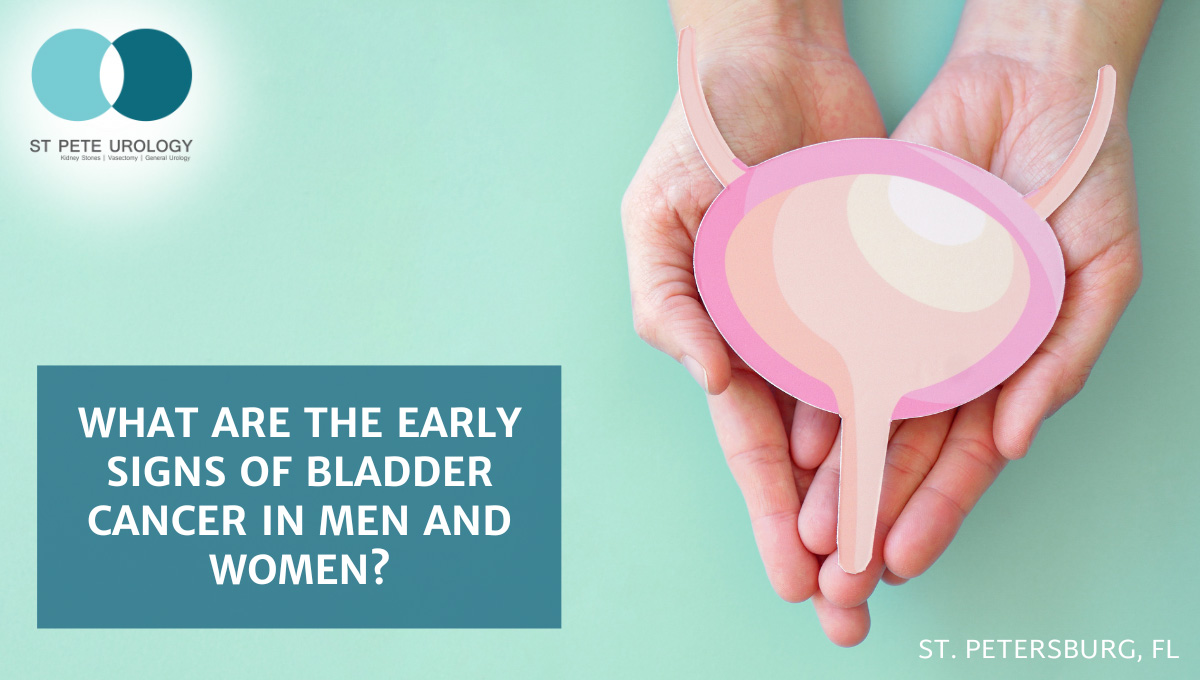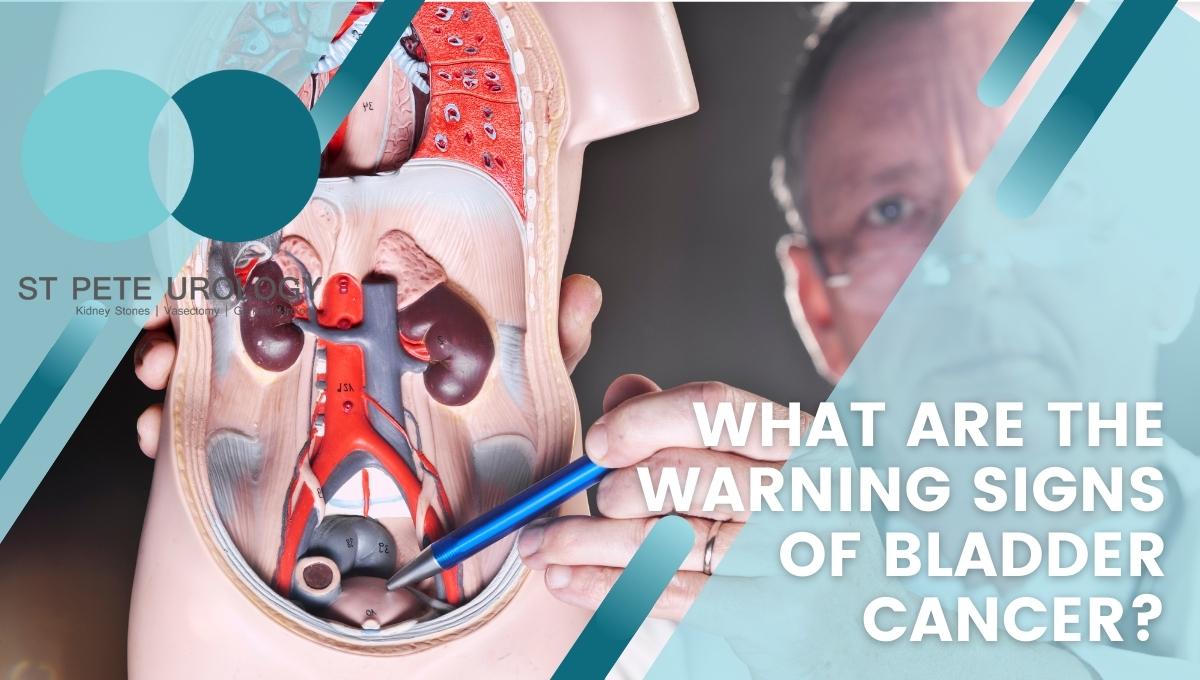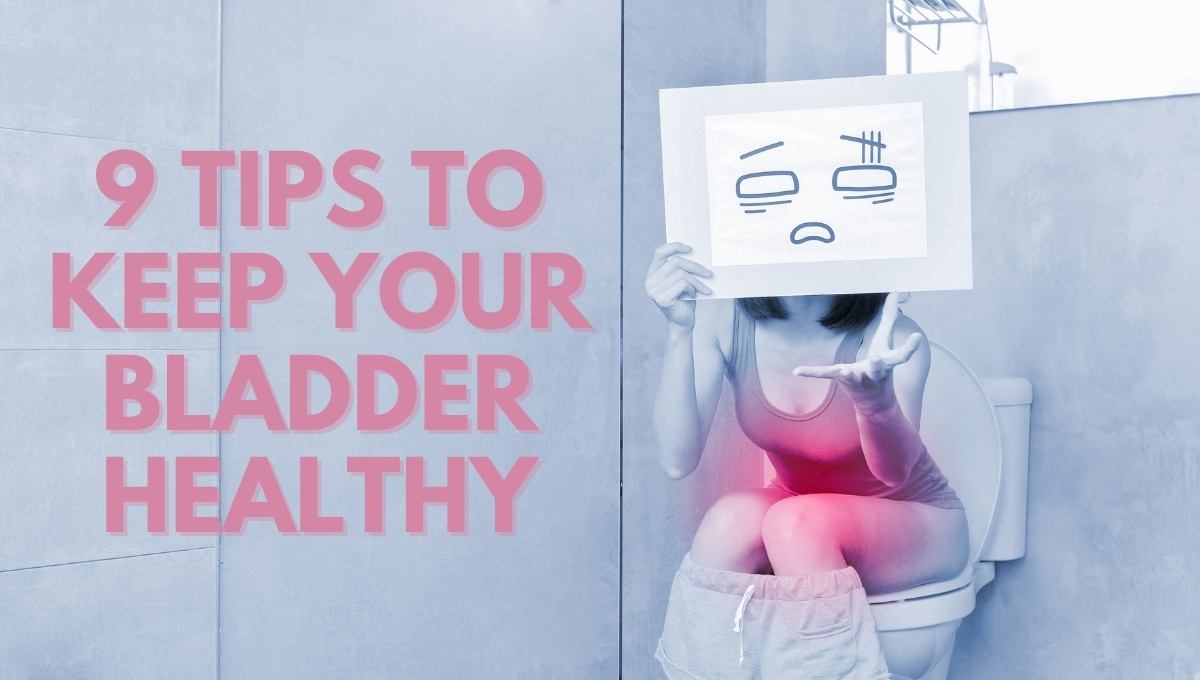Recognizing early signs of bladder cancer is crucial. Learn symptoms, risk factors, and the importance of early diagnosis for better health.
Continue readingCommon Bladder Control Problems
How Is Bladder Cancer First Diagnosed?
What are the warning signs of bladder cancer?
9 Tips to Keep Your Bladder Healthy
 The bladder’s function is to store urine and allow urination to be infrequent and controlled. Bladder problems may lead to bothersome issues such as incontinence, infections and overactive bladder. While you may not be able to prevent every possible bladder problem, taking appropriate measures can help to lessen many of them.
The bladder’s function is to store urine and allow urination to be infrequent and controlled. Bladder problems may lead to bothersome issues such as incontinence, infections and overactive bladder. While you may not be able to prevent every possible bladder problem, taking appropriate measures can help to lessen many of them.
What should you do to keep your bladder healthy?
1. Drink plenty of fluid
Drinking plenty of fluid increases the volume and frequency of urination, which in turn helps to flush out bacteria from your bladder. Water is the best fluid for your bladder and should be at least half of your daily fluid intake.
Ideally, you should drink 6-8 eight-ounce glasses of water every day. But if you engage in intense exercise or activity, you may need to drink more to compensate for fluid loss. On the other hand, if you have a condition such as heart disease or kidney failure, you may need to drink less. Speak with your doctor about how much fluid is right for you.
2. Avoid smoking
Smokers are more likely to develop bladder control issues than non-smokers. Cigarette smokers also tend to have more severe bladder symptoms. For heavy smokers, there is a tendency to develop a chronic cough, which exerts added pressure on the bladder and worsens urinary incontinence. Plus, tobacco smokers are three times more prone to bladder cancer than non-smokers. Avoiding cigarette smoking is good for your bladder health.
3. Get active
Physical activity not only relieves bladder problems but also prevents fluid buildup in the legs. Fluid retention in the legs—usually due to heart disease or a sedentary lifestyle—can lead to bladder control issues. You can reduce fluid retention through low-impact moderate activity such as biking, swimming or walking briskly for at least 30 minutes at least 5 days a week.
4. Do Kegel exercises
Weak pelvic floor muscles are a common cause of urine leakage (incontinence). Kegel exercises target and strengthen pelvic floor muscles and keep urine from leaking when you sneeze, laugh, lift or have a sudden urge to urinate. Speak with your urologist about what kind of exercise will benefit you the most.
5. Avoid bladder irritants
Certain foods and beverages can irritate the bladder and trigger bladder problems. Known bladder irritants include alcoholic beverages, apples, apple juice, bananas, brewer’s yeast and carbonated drinks. Others are chilies, chocolate, citrus fruits, coffee, cranberries, grapes, nuts, raw onions, raisins, soy sauce, tomatoes and vinegar.
While you don’t have to stop eating your favorite foods and drinks entirely, reducing the amounts can improve your bladder symptoms.
6. Maintain a healthy weight
Being overweight is a risk factor for incontinence, particularly stress incontinence. The excess weight exerts more pressure on the abdomen and bladder and weakens pelvic floor muscles. In fact, nearly 50-percent of older people who are overweight struggle with bladder incontinence.
By losing weight in the abdominal area, you can reduce pressure on the bladder and pelvic muscles and improve bladder control. In many cases, weight loss improves incontinence symptoms or gets rid of them completely. Make healthy food choices and engage in regular exercise to achieve and maintain a healthy weight.
7. Prevent constipation
Bladder problems are quite common in people with constipation because a full rectum presses the bladder wall causing either outflow obstruction or increased spasm. Also, constipation makes pelvic muscles overactive, which causes dysfunction in stool and urine elimination and leads to an overactive bladder. You can reduce constipation by drinking enough water, eating high-fiber foods (like whole grains, fruits, and fresh vegetables), and being physically active.
8. Manage medications
Some medications can trigger bladder control problems. For example, high blood pressure prescriptions tend to increase urine output and relax bladder muscles resulting in urine leakage. Drugs such as antidepressants, muscle relaxants, antihistamines, sedatives, and tranquilizers may hinder bladder contraction and reduce awareness of the need to urinate.
You should not stop taking your medications just because you suspect they are responsible for your bladder issues. Instead, and before making any change, speak with your doctor about your concerns. The doctor may adjust the dosage or offer a different medication. In cases where the benefits of the medications far outweigh the related bladder issues, your doctor will work with you on alternative ways to ease symptoms.
9. Flush out bacteria
Proper cleaning of the genital area before and after sexual intercourse helps to reduce bacteria and prevents bladder infections. Passing urine before and after sex helps to flush out bacteria and stops their entry into the urethra during sex.
Since holding urine in the bladder for too long increases the risk of infection and can weaken bladder muscles, make sure to pass urine as often as possible. Use the bathroom at least every 3 to 4 hours, and when urinating, don’t rush. Take your time to fully empty your bladder.
At St Pete Urology, we provide expertise in the diagnosis and treatment of urinary disorders. Our urology specialists will work with you to develop an individualized treatment plan for your problems. We value our multidisciplinary and compassionate approach to caring for our patients. For more information on the prevention, diagnosis and treatment of urinary disorders, visit the St Pete Urology website.
Signs of Bladder Problems
 Bladder problems are very common and can range from mild issues like a urinary tract infection to life-threatening conditions such as bladder cancer. It is important to be aware of your bladder health and symptoms that can indicate a problem so you can seek prompt medical treatment when needed.
Bladder problems are very common and can range from mild issues like a urinary tract infection to life-threatening conditions such as bladder cancer. It is important to be aware of your bladder health and symptoms that can indicate a problem so you can seek prompt medical treatment when needed.
Problems With Urination
Urinary incontinence and urinary tract infections, or UTIs, are both common problems that affect millions of people every year.
If you experience leaking urine during activities like coughing, laughing or bending over; if you feel sudden, strong urges to go to the bathroom but do not always make it in time; or if you wet the bed at night, you may be suffering from a bladder issue causing urinary incontinence. It is important to discuss these symptoms with your doctor, who can help find solutions so you enjoy a better quality of life.
If you are experiencing a burning sensation during urination, a frequent urge to go, cloudy urine or a fever, you might have a UTI. A physician can determine the best route to deal with it, most likely involving antibiotics, to clear up the infection before it can spread to the kidneys and become more serious.
Pain In The Bladder
If you have been experiencing issues with the urinary tract for more than six weeks without signs of an infection, and if there is also pain and a feeling of pressure in the bladder area, you might be dealing with interstitial cystitis. This is a chronic health condition that can range from mild to severe. Every case of IC is different, so your doctor will work closely with you to reach a diagnosis and determine a treatment plan.
Warning Signs Of Bladder Cancer
The first sign of bladder cancer is usually blood in the urine, also known as hematuria. Sometimes the blood is not visible and will only be noticeable during urinalysis performed as part of a physical exam. Other times, enough blood may be visible to tint the urine pink, orange or dark red. Blood in the urine also can be a symptom of other serious issues such as kidney stones or an infection.
Other signs of bladder cancer can include indications of less severe bladder problems, such a frequent urge to go, a burning sensation during urination, or difficulty relieving yourself. Symptoms of more advanced bladder cancer include an inability to urinate, lower back pain, swollen feet or bone pain.
Whenever you experience new symptoms or difficulties with your urinary system, it is important to contact your doctor as soon as possible. The urologists at St Pete Urology are here to help with bladder problems of all kinds so you can live your happiest, healthiest life. For more information, visit the St Pete Urology website.
5 Things You Need To Know About Bladder Cancer
Bladder cancer is a health condition where malignant tumors start growing in the urinary bladder. While it is a condition that typically affects older adults, bladder cancer can affect all age groups. It is the fourth most common cancer in the United States, and has a 50-70 percent possibility of recurring.
1. What Is Bladder Cancer?
This type of cancer is characterized by aggressive cell growth in the bladder, a muscular organ that stores urine. Instead of a growing in the usual fashion, these mutated cells multiply rapidly and uncontrollably. Transitional cell carcinoma is the most common type of bladder cancer, and occurs in the bladder’s inner lining.
2. Signs and Symptoms
The most common symptoms include blood in the urine, frequent urination, severe itching, and general discomfort. Some may even experience excruciating pain. Just like prostate cancer, middle-aged men are the most susceptible to this disease. In fact, the symptoms are identical despite the fact that it affects different organs. Unfortunately, just like prostate cancer, the symptoms are not easily detected and it often develops quietly.
3. Causes
While the exact cause cannot be pinpointed, smoking is believed to be the leading cause of this type of cancer. Smoking forces the body to process harmful chemicals that are ultimately released through your urine. Exposure to industrial chemicals found in leather, rubber, paint, and even hair dyes can also trigger the growth of cancer cells. This explains why people who are most at risk include factory workers, machine setters, rubber workers, and hairstylists.
4. Detection and Prevention
To diagnose this cancer, a urologist will perform a cystoscopy procedure where a flexible tube with a camera is inserted in the urethra. Abnormal lesions are then biopsied and analyzed. Early detection of the disease can also be made through a patient’s urine sample.
To prevent this cancer, cut down or stop smoking tobacco. If you work in any of the professions that expose you to industrial chemicals, it may be wise to consider other career options to cut down the possibility of the disease. Regular consumption of fruits and vegetables like carrots and citrus will also help you cut down the risks.
5. Treatment Options
In the United States alone, there is an estimated 55,000 yearly cases of this type of cancer. The good news is that it is curable given the right methods of treatment. Urologists in St Petersburg, for instance, give a number of options to combat cancer of the bladder and this includes the following: radiation therapy, surgery, immunotherapy, and chemotherapy.
However, before a patient is treated, a thorough examination should be done. This is because treatment is based on the cancer type and its specific stage. The cancer patient’s age and general wellness are also major factors to consider before choosing the treatment.
Regardless of the treatment choice, urologists in St Petersburg will suggest that cancer patients be well-aware of the risks. For one, it involves a commitment to strictly follow the doctor’s advice. Cancer of the bladder is something that should be addressed promptly. The earlier it is diagnosed and treated, the greater chance for full recovery.




 Early diagnosis of bladder cancer is crucial for successful treatment. Unfortunately, there is no specific test available for screening asymptomatic people for the disease. So diagnosis of the cancer primarily relies on the presence of symptoms.
Early diagnosis of bladder cancer is crucial for successful treatment. Unfortunately, there is no specific test available for screening asymptomatic people for the disease. So diagnosis of the cancer primarily relies on the presence of symptoms. 
 Because the bladder holds urine produced by the kidneys, the warning signs of bladder cancer usually relate to urination. Urine is made in the kidneys and moves down the ureters to the bladder, which then stores the urine to allow for an infrequent, controlled urination.
Because the bladder holds urine produced by the kidneys, the warning signs of bladder cancer usually relate to urination. Urine is made in the kidneys and moves down the ureters to the bladder, which then stores the urine to allow for an infrequent, controlled urination.

